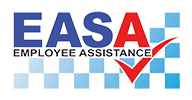Benefits to Employers
Providing a healthy and safe workplace benefits all workers. It also makes good business sense.
Financial Benefits
The financial benefits of an EAP comprise: •A health care value component which includes workers compensation and salary continuance insurance savings
- A human capital value component representing savings in reducing absenteeism, presenteeism (reduced productivity while at work) and turnover and improving engagement and morale
- An organisational value component comprising cost savings in regard to issues such as safety risks, employee grievances and legal claims and the positive benefits of demonstrating employee concern and support.
- An EAP will return far more than it costs.
Tax Incentives
EAPs are fully tax deductible through WH&S and HR initiatives.
HR Management
Many organisations recognise the value of incorporating an EAP into their human resource management strategy because it:
- Offers protection against the downside of HR-associated risks
- Forms part of a Company’s overall policy-driven approach to HR management
- Enables companies to fulfil a broad employee-focused strategy and to be recognised as an “employer of choice”
- Satisfies OH&S legislation requirements.
An effective EAP is the foundation to a successful workplace health and productivity strategy. It is a win for employers and their employees.
Statistics and Research
- Domestic and international studies have found that in ROI terms, EAP counselling programs can return between 5 to 10 times the employers’ investment.[1]
- Longitudinal survey data across all major Australian industry sectors in both the public and private sector, shows the significant financial savings EAPs provide in the areas of health care, human capital and organisation value.[2]
- For every $1 spent on an EAP, organisations can expect an ROI
Sources: [1] Hargrave, G.E., Hiatt, D., Alexander R, & Shaffer, I.A. (2008) EAP treatment Impact on Presenteeism and Absenteeism: Implications for Return on Investment. Journal of Workplace Behavioral Health, 23(3), 283-293. [2] Davidson Trahaire Corpsych, “EAP Return on Investment Summary 2011”. [3] Hargave et al (ibid).
